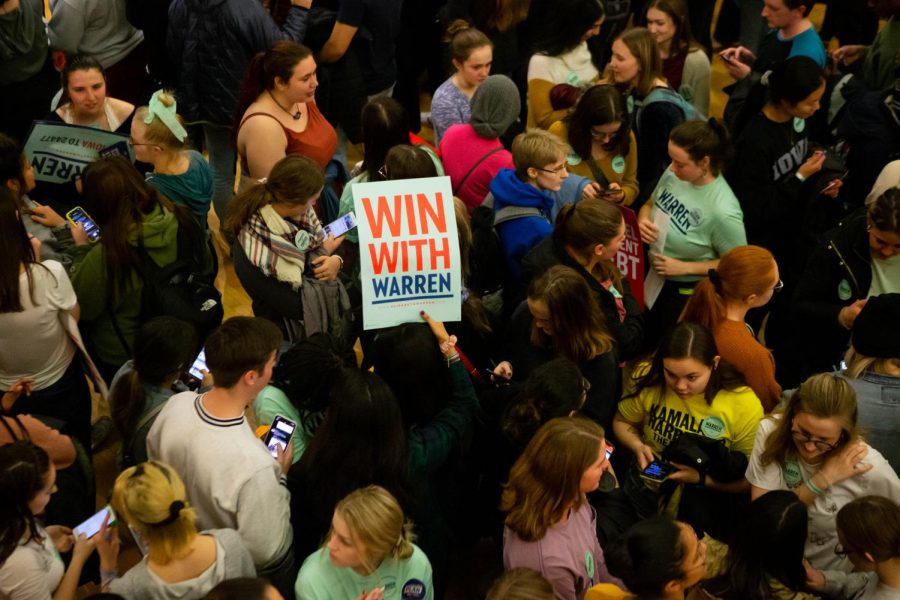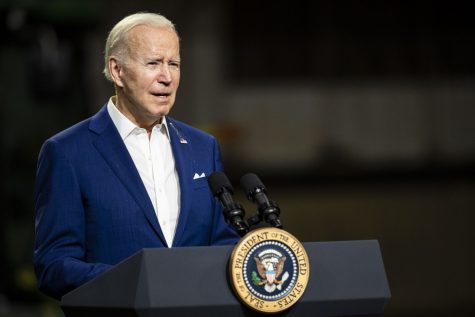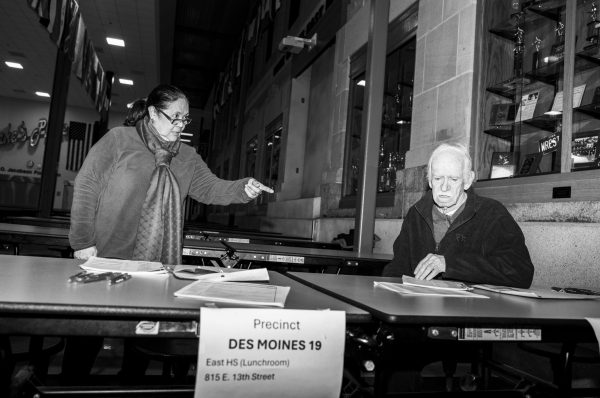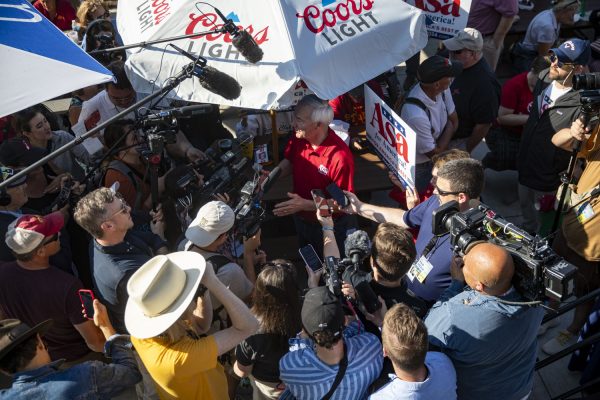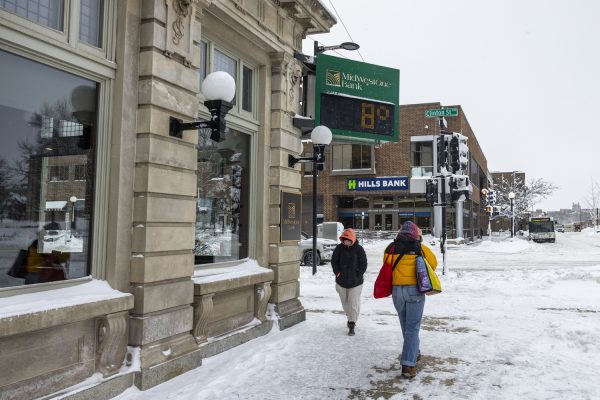Johnson County reports record Democratic caucus turnout
While Democratic caucus turnout across the state was lower than expected, Johnson County saw a record turnout at the caucuses, driven largely by high numbers at on-campus locations.
A sign for Sen. Elizabeth Warren, D-Mass. is seen during a caucus at the Iowa Memorial Union on Feb. 3.
February 11, 2020
Amid lower-than-expected Democratic caucus turnout across the state this year, Iowa’s bluest county set a caucus record, partially due to a record proportion of young people participating.
While Democratic caucus turnout across the state was far below where it was in 2008, Johnson County set a record with 21,437 people showing up to caucus, according to numbers provided to The Daily Iowan by Johnson County organizer John Deeth.
According to the Associated Press, Democratic caucus turnout across the state in 2020 was around 176,000 — 5,000 more than 2016 but far below the 2008 record of 238,000.
In Johnson County, turnout was 19,407 in 2016 and 18,362 in 2008. The 2008 Democratic caucuses were held on Jan. 3, when students were on winter break and not populating Iowa City.
The turnout change is indicative of party trends in Iowa, Deeth said.
“Part of what’s happening is as the rest of the state is getting redder, Johnson County is getting bluer,” he said.
Democrats made up 43.4 percent of active registered voters in Johnson County in January 2008, jumping up to 47.2 percent in February 2020, according to the Iowa Secretary of State’s website. Statewide, Democratic registration fell slightly from 31.5 percent of active registered voters in 2008 to 30.7 percent in 2020.
Increased turnout among young people may have contributed to the higher numbers in Johnson County. According to a report from CIRCLE at Tufts University, people aged 17-29 made up nearly a quarter of all caucusgoers in 2020, the highest proportion recorded in a Democratic caucus.
David Redlawsk, the University of Delaware Political Science and International Relations Department chair who studies the Iowa caucuses, said high turnout among young people was partially driven by Bernie Sanders. Sanders drew 48 percent of support among people under 30 statewide, according to CIRCLE.
Turnout rose significantly in precincts on campus, with Iowa City Precinct 11 at the Voxman Music Building increasing by 146 people from 2016, and precinct 5 at the Iowa Memorial Union increasing by 129. Sanders won in both precincts.
“To the extent that Sanders generated some enthusiasm to get people out, he clearly has a significant support among the youngest caucusgoers,” Redlawsk said. “To the extent young people came out, a lot of them were clearly driven by support for Sanders.”
Jocelyn Roof, the executive director of Hawk the Vote, worked with the organization in 2019 to educate students about the caucuses. She said the organization registered more than 2,000 UI students to vote ahead of the caucuses.
Roof said students on campus were interested in getting involved in politics, but a lot of them weren’t sure how the caucus process worked and wanted to learn more.
“I think a lot of young people are sick of sharing posts on Facebook and Twitter and not feeling like they can do anything about it,” she said. “And so I think people are energized to turn out because they feel sick of feeling like nothing that they do matters.”
While people under 30 made up 24 percent of statewide caucusgoers, turnout didn’t increase in every area with a high concentration of young people. Poweshiek County, another heavily Democratic county and the home of Grinnell College, had a lower turnout than in 2016, Grinnell College political-science professor Barbara Trish said.
In Grinnell’s 4th Ward precinct, Trish said turnout fell from 937 in 2016 to 838 in 2020.
“Chances are, explaining turnout, like many political phenomena, is a multivariate explanation,” she said. “All sorts of things are in the mix, some would be unique to a particular location, others would apply more generally.”



